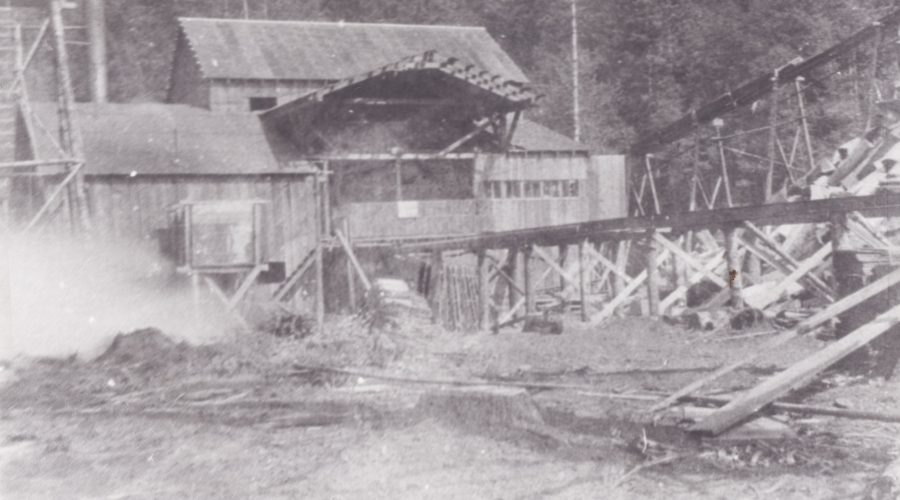Big Dreams For Bornite Mine

The Story Of Bornite, Washington
Sometime in the later 1890s two prospectors by the name of Charles and Pat Kelly traveled from Robe, WA over Green Mountain, and then following Canyon Creek, hiked through Windy Pass to the headwaters of Clear Creek. Factual or not these are the names we have given these places over time. As for Charles and Pat, they traveled through rugged lands not yet seen by white man. Upon their arrival at the headwaters of Clear Creek and Copper Creek they discovered a vein of ore called Bornite, a type of copper ore with a striking iridescent brownish-red color.
By 1902-03, there were big dreams to develop a tramway into this discovery site, now given the name of Bornite, and take it all the way into Darrington where the train could carry the ore to smelters in Everett. It was estimated that there would be a need of $500,000 to develop this project. Miles of pipe were laid from Bornite, heading uphill to capture Copper’s Creek’s waters high above. This water was used to drive a turbine in an electrical powerhouse for the mine.
The Bornite Gold and Copper Mining Company of Bangor, Maine poured money into this project. Construction in Darrington started in 1903 and would continue to Bornite, crossing over the hill at Backman Creek, then over Frog Lake, where a camp was established with a big cookhouse to feed the many hard workers. A man by the name of Robb was in charge of the construction. Billy Hoffman and Al Dodge were acting as foremen and the cook was Jack Keenan, a brother of James Keenan, then owner of the Pioneer Saloon in town.
Construction ground to a halt during the harsh winter of 1904 and resumed again in early summer when the deep snows finally melted off. Lumber was first cut in Darrington at the U.S. Mill and a camp was established there. As the tramway got closer to Bornite, a second smaller sawmill and water tower was added south of Frog Lake. The tramway was over 11 miles long and consisted of ties and wooden rails topped with iron strapping. The tram cars were drawn by mules in tandem, who transported much of the machinery. At one time there were over 125 men working on the tramway to Bornite. A 2,600 foot aerial tram was also constructed from the mining tunnel on Liberty Mountain, then traveled down Windy Pass where Bornite Creek and the waterfall is located, to a camp beyond called “Copper.” There the ore was offloaded from the aerial tram, transferred to the ground tramway and made its way up to Darrington. The swift waters of Copper Creek powered the aerial tram and drill that worked non-stop digging deep into the mountain side. Predictions were to have the first shipment of ore on its way by December 1905.
The original plan for the mining tunnel was to drive it 3,000 feet to a rich deposit about 1,200 downward to strike a large body of ore. The outcrop of this vein was very visible from the south summit of the mountain. By 1906 over $300.000 had been invested, over 100 men worked around the clock to build a 13 mile tramway, and miners had tunneled into Liberty Mountain over 3,300 feet, but no great strike was ever found. Investors began to pull their money out of the project and Bornite was shut down. L.W. Thiele stayed on as a resident manager until 1910, then the equipment was sold and moved to the Sunset Mining Company located at Galena. To get to Bornite, you take the old trail that follows the remains of the old ground tramway then follow the remnants of what is left of an old Forest Service trail once called Copper Creek.
Reminders Of The Old Bornite Mining Days
Sources:
- Memoirs of pioneer Nels Bruseth, 1939
- Notes by pioneer Harold Engles
- Index To Mineral Properties Of Snohomish County; Mining In The Pacific Northwest, Whitehorse District